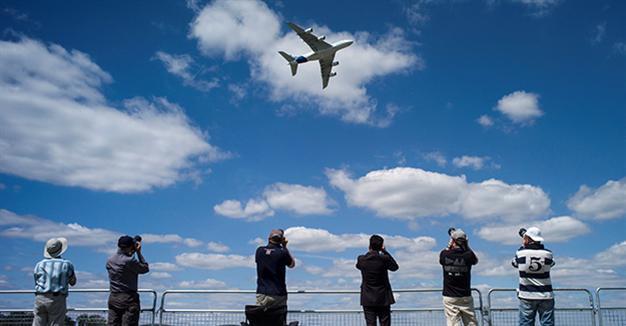Demand for US arms exports set to keep growing, says official
LONDON - Reuters

REUTERS photo
International demand for U.S. weapons systems is expected to continue growing in coming years, a senior U.S. Air Force official said on July 10, citing strong interest in unmanned systems, munitions and fighter jets.
“The appetite just keeps getting bigger and bigger,” U.S. Air Force Deputy Undersecretary Heidi Grant told Reuters in an interview on the eve of the Farnborough International Airshow.
U.S. arms sales approved by the Pentagon’s Defense Security Cooperation Agency rose 36 percent to $46.6 billion in the fiscal year ended Sept. 30, 2015, and are likely to remain strong this year, Grant said.
Grant, the Air Force’s top international arms sales official, said she was working with many countries in eastern Europe and others that wanted to increase their defenses following Russia’s annexation of the Crimea region of Ukraine, but faced tough budget constraints.
Pooling resources was one option being explored, she said, noting that many European countries already pooled and shared their transport assets in the European Air Transport Command.
Transport has been a big concern for European countries given delays in deliveries of the Airbus Group SE A400M military transport plane caused by a series of technical challenges on the multi-national development program.
France recently purchased four Lockheed Martin Corp C-130J transport planes to help bridge the gap, particularly given its military operations in Africa. Germany is also considering buying C-130J planes to cover additional needs that government sources say would not be addressed by the A400M.
Grant said there were early discussions about the U.S. military joining the European transport pool to help Europe meet its transportation and logistics needs.
The U.S. Air Force was also exploring the possibility of adding some C-130J aircraft to the Strategic Airlift Capability, a consortium of 12 nations that operates three Boeing Co C-17 transport planes from Papa Air Base in Hungary, she said.
“We’re looking at all kind of different options,” Grant said. “We’re just looking for creative solutions to get at this gap in a resource-constrained environment.”
No decisions had been made and there were still important questions to resolve, including who would bear the cost of expanding the current efforts, she said.
Grant said newly confirmed Air Force Chief of Staff David Goldfein had carried out 14 bilateral meetings with officials from other countries and six industry partners during his visit to the Royal International Air Tattoo, the world’s largest military air show, in England this past week.
Goldfein’s top priority, she said, was to increase the ability of the U.S. military to cooperate and work together with allies and coalition partners, and he had talked with industry about how best to incentivize that kind of approach.
